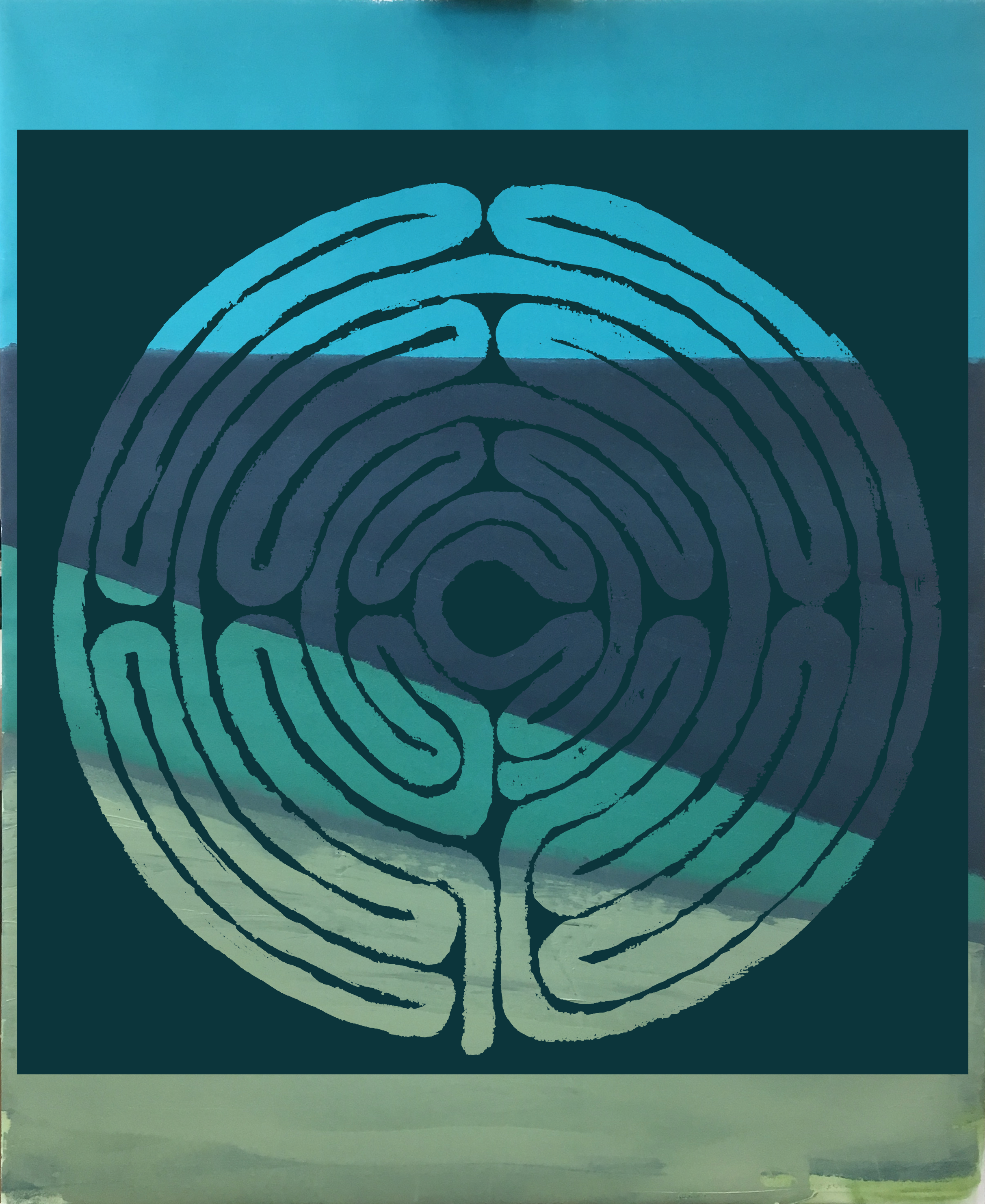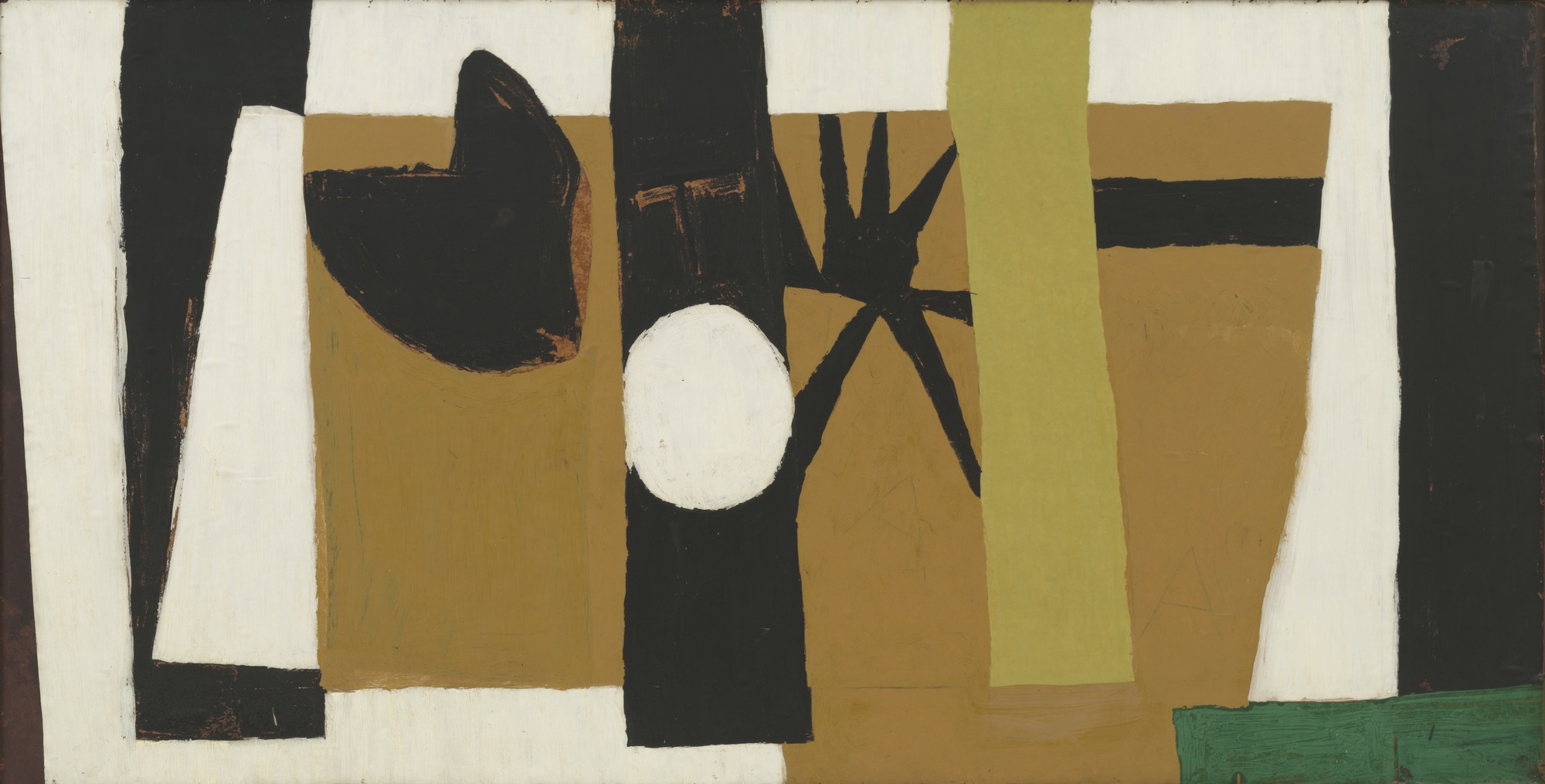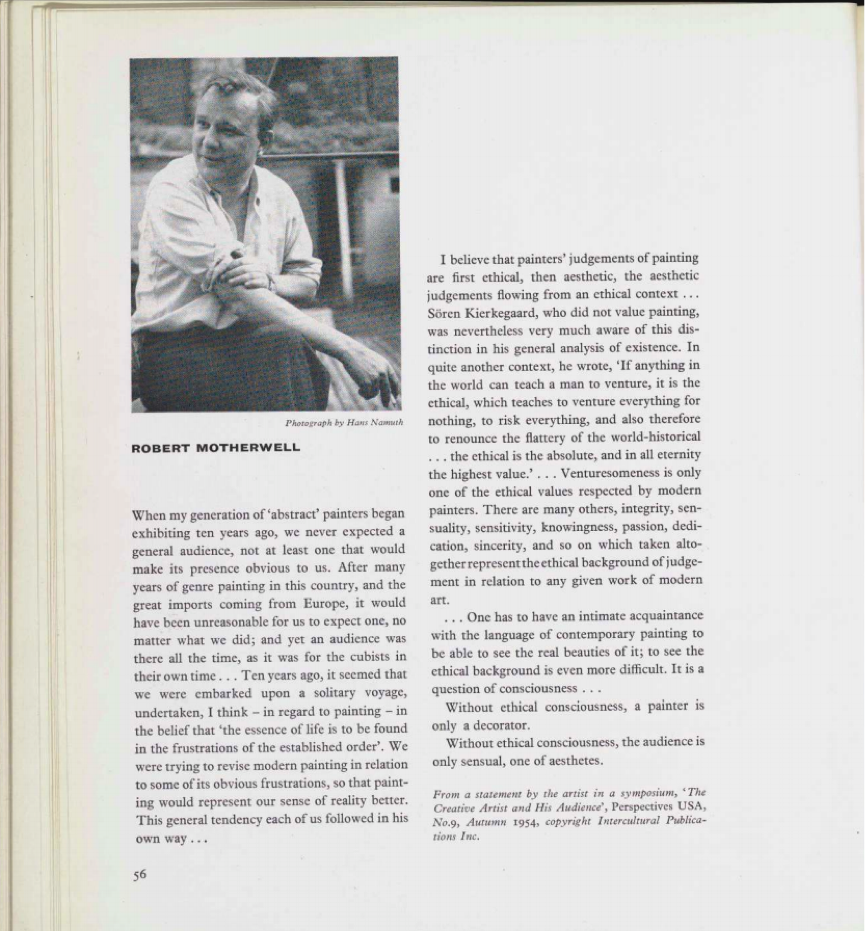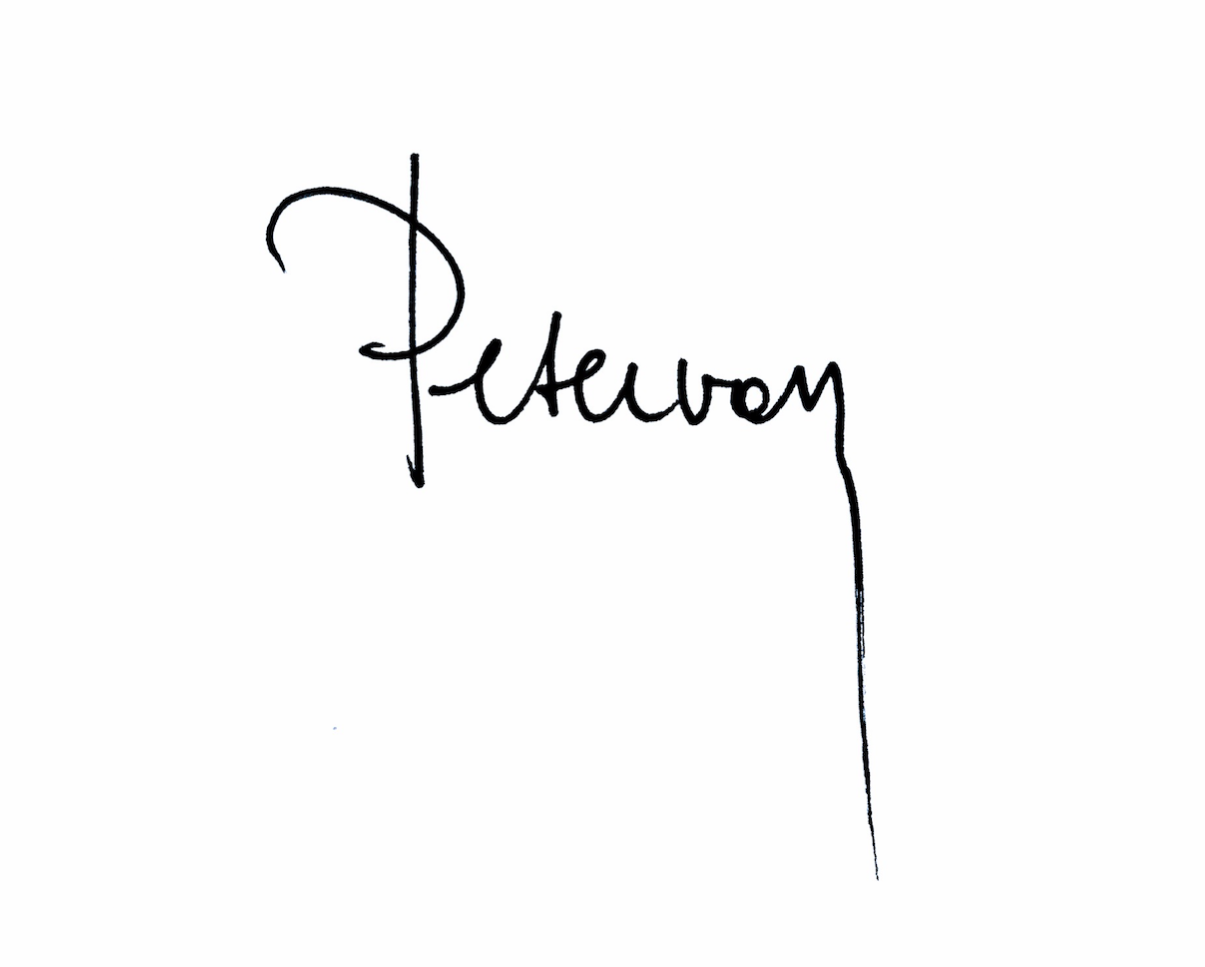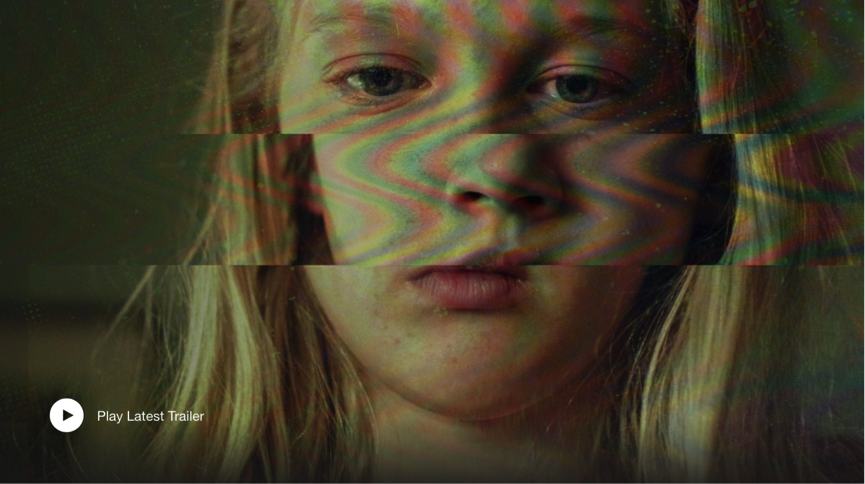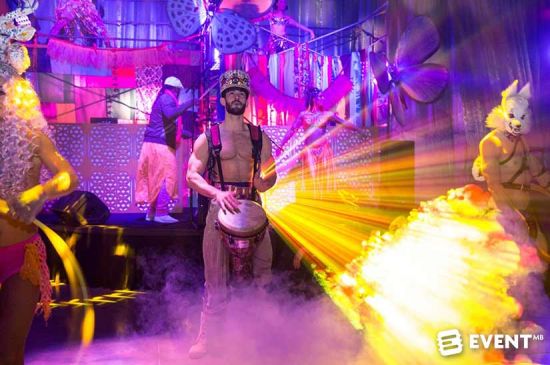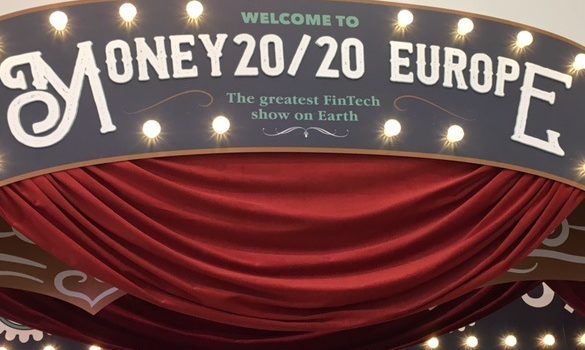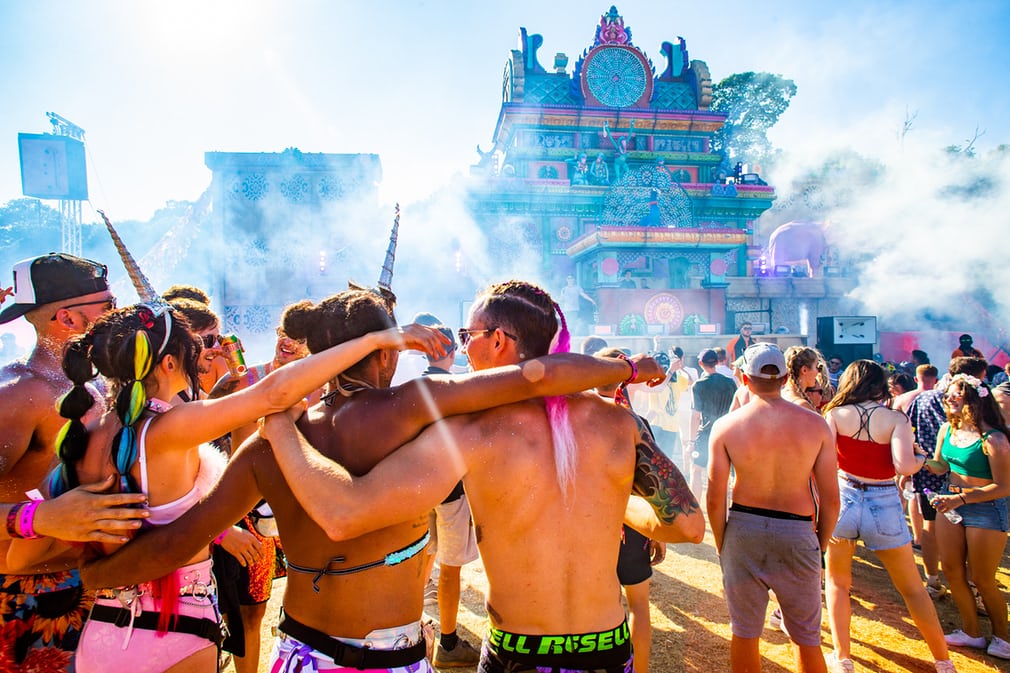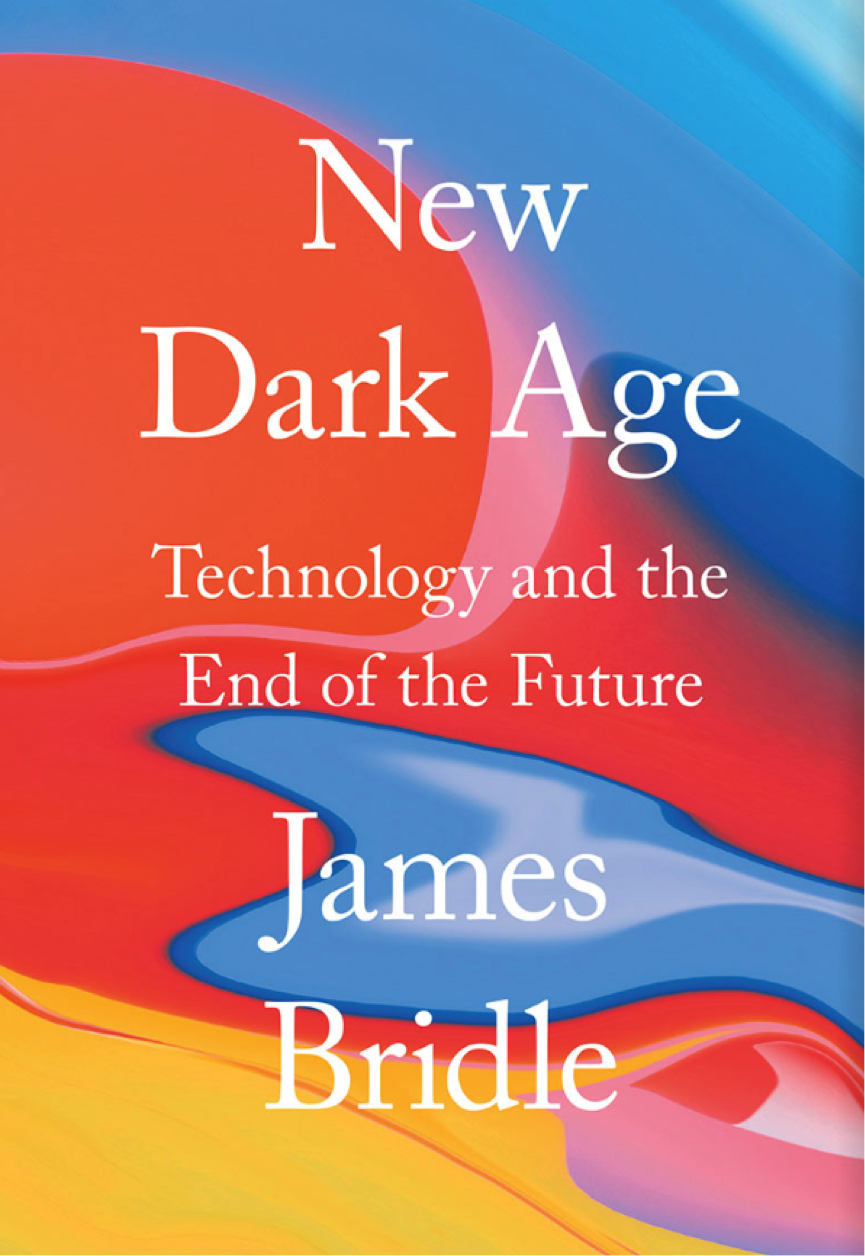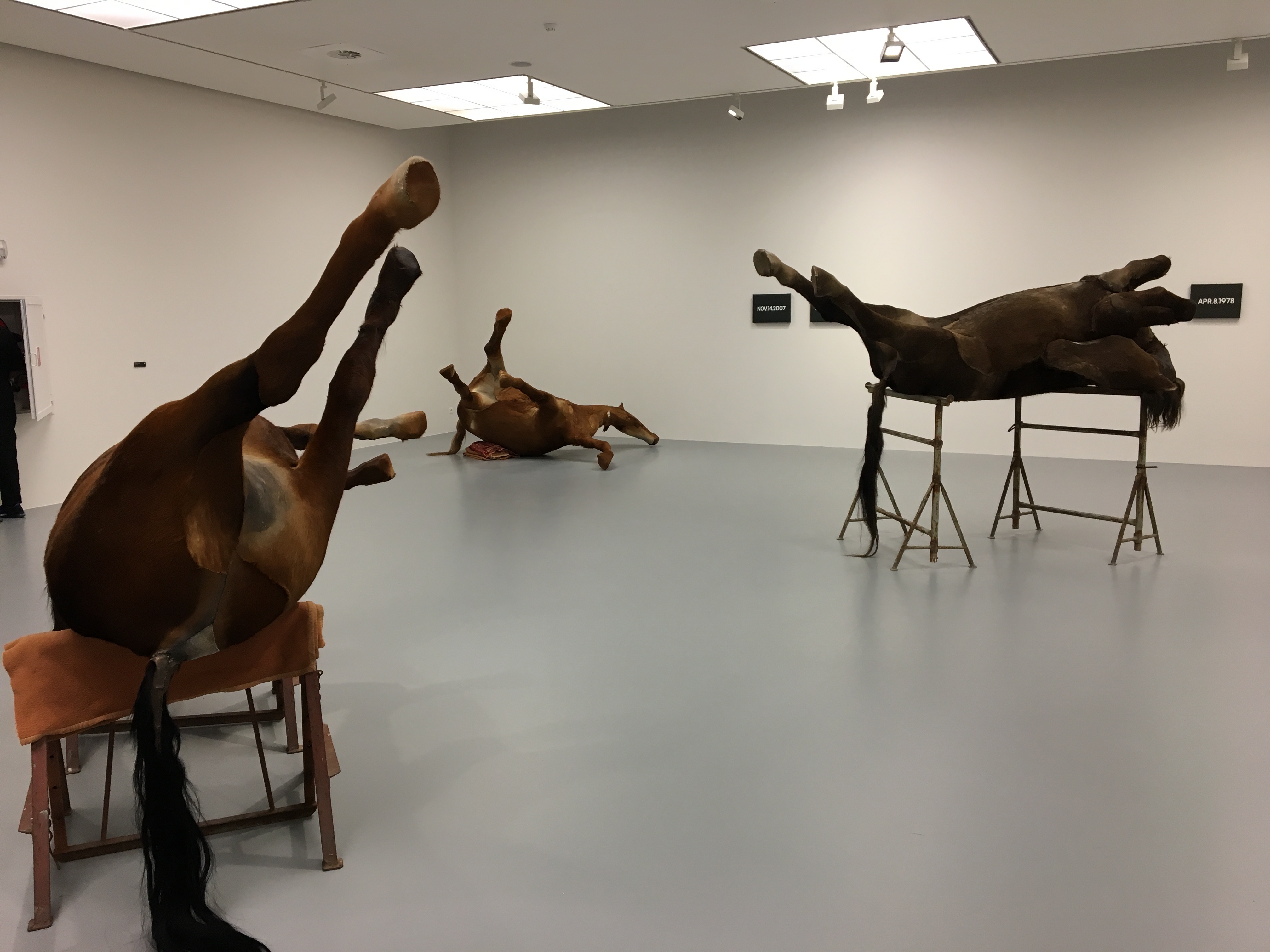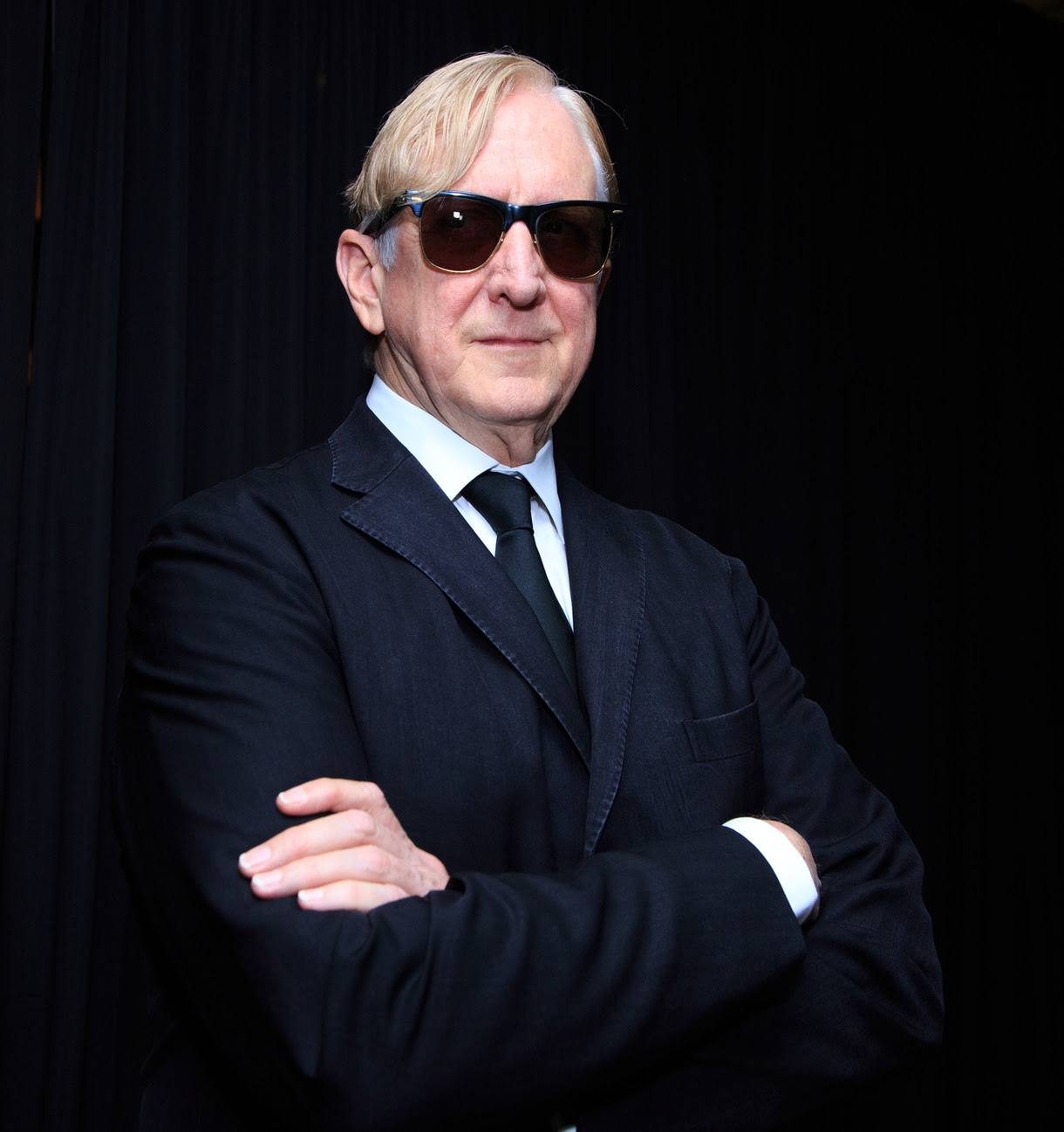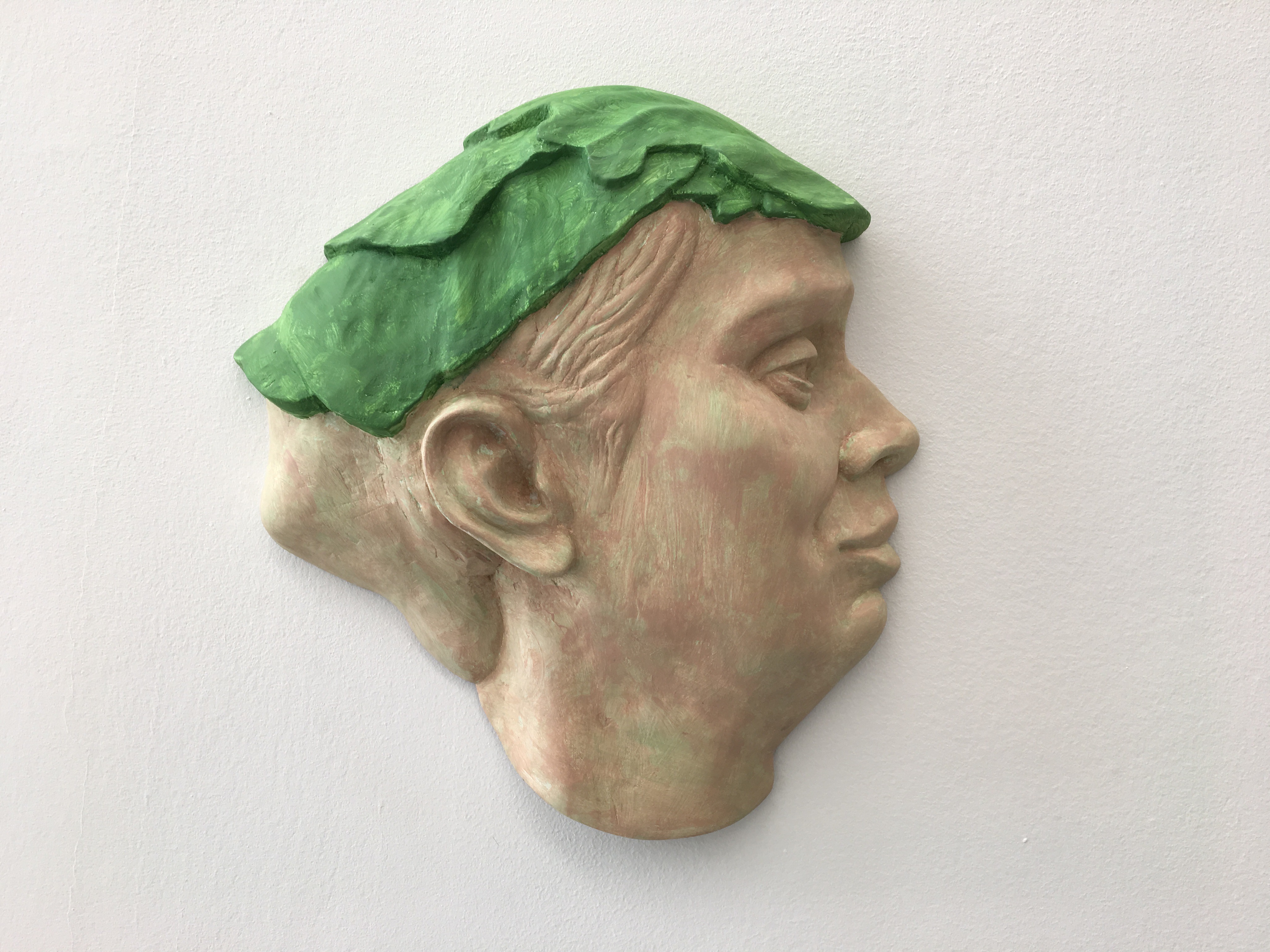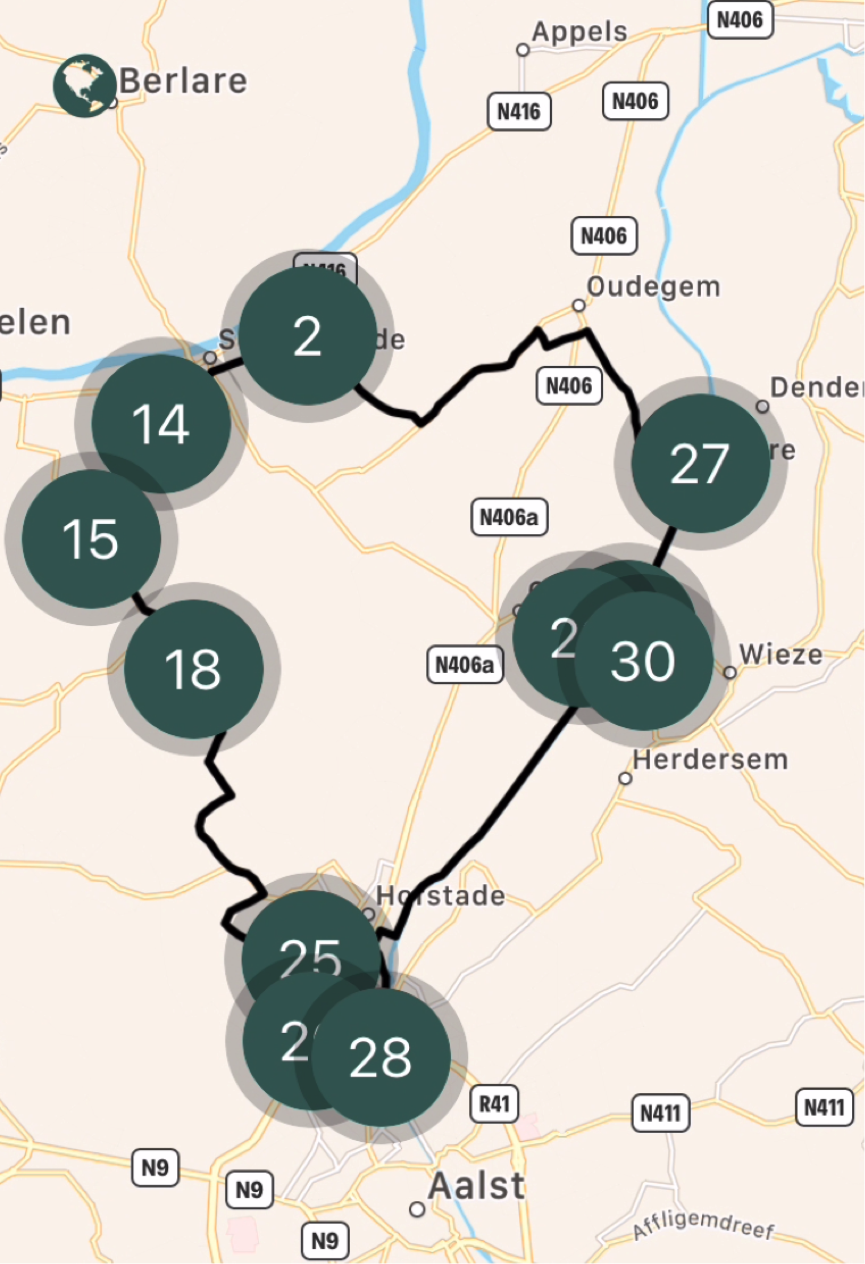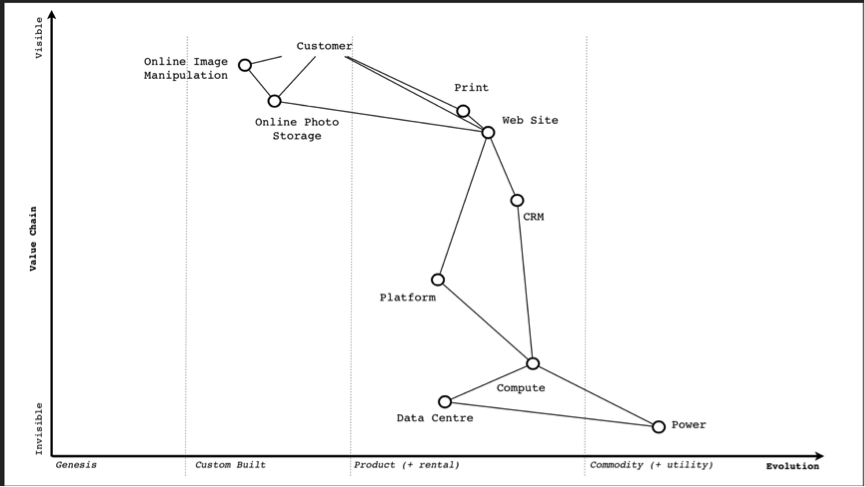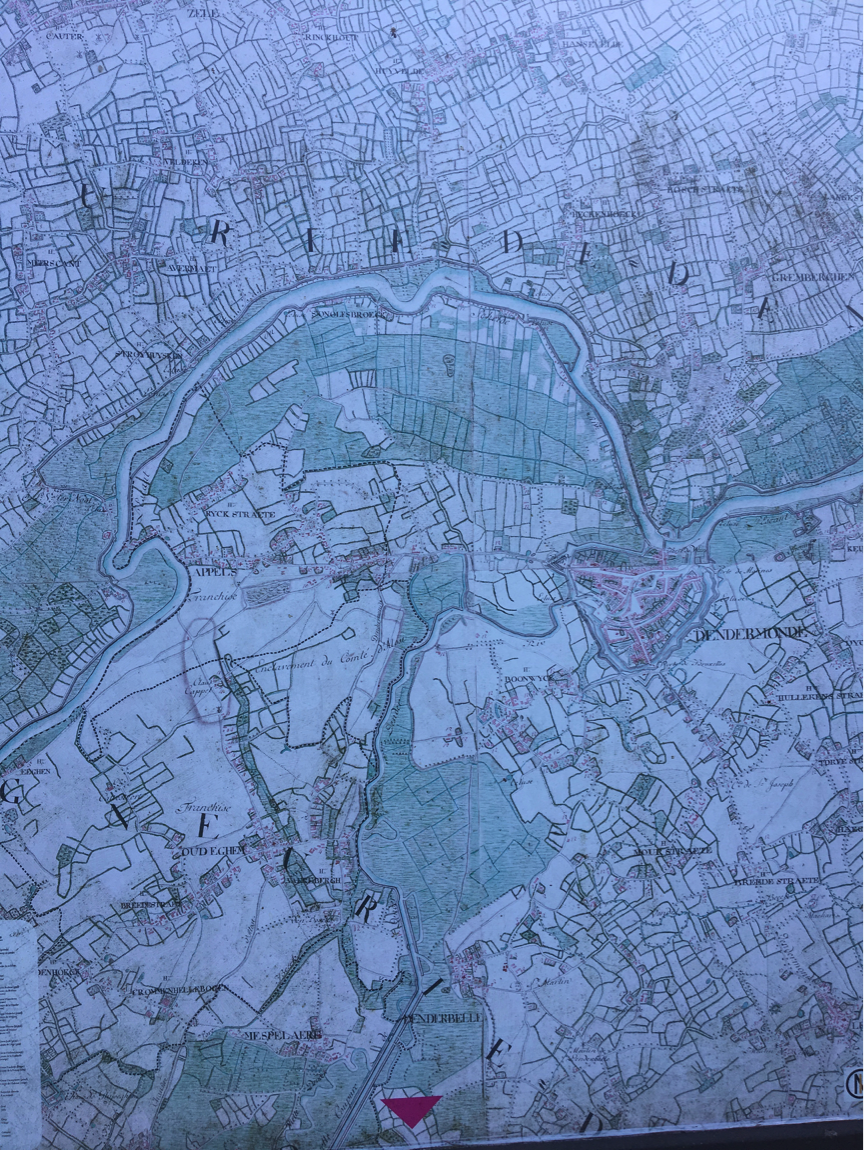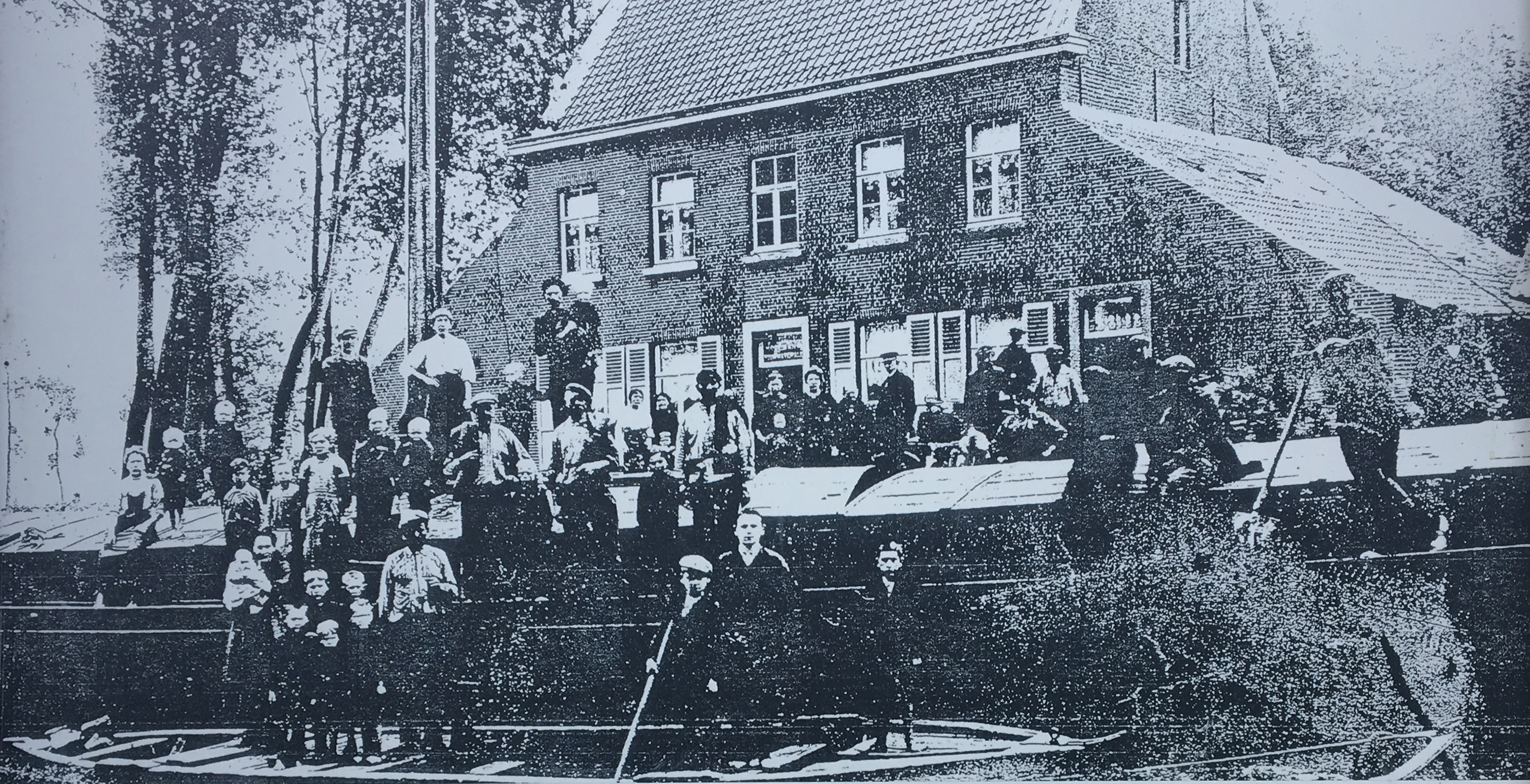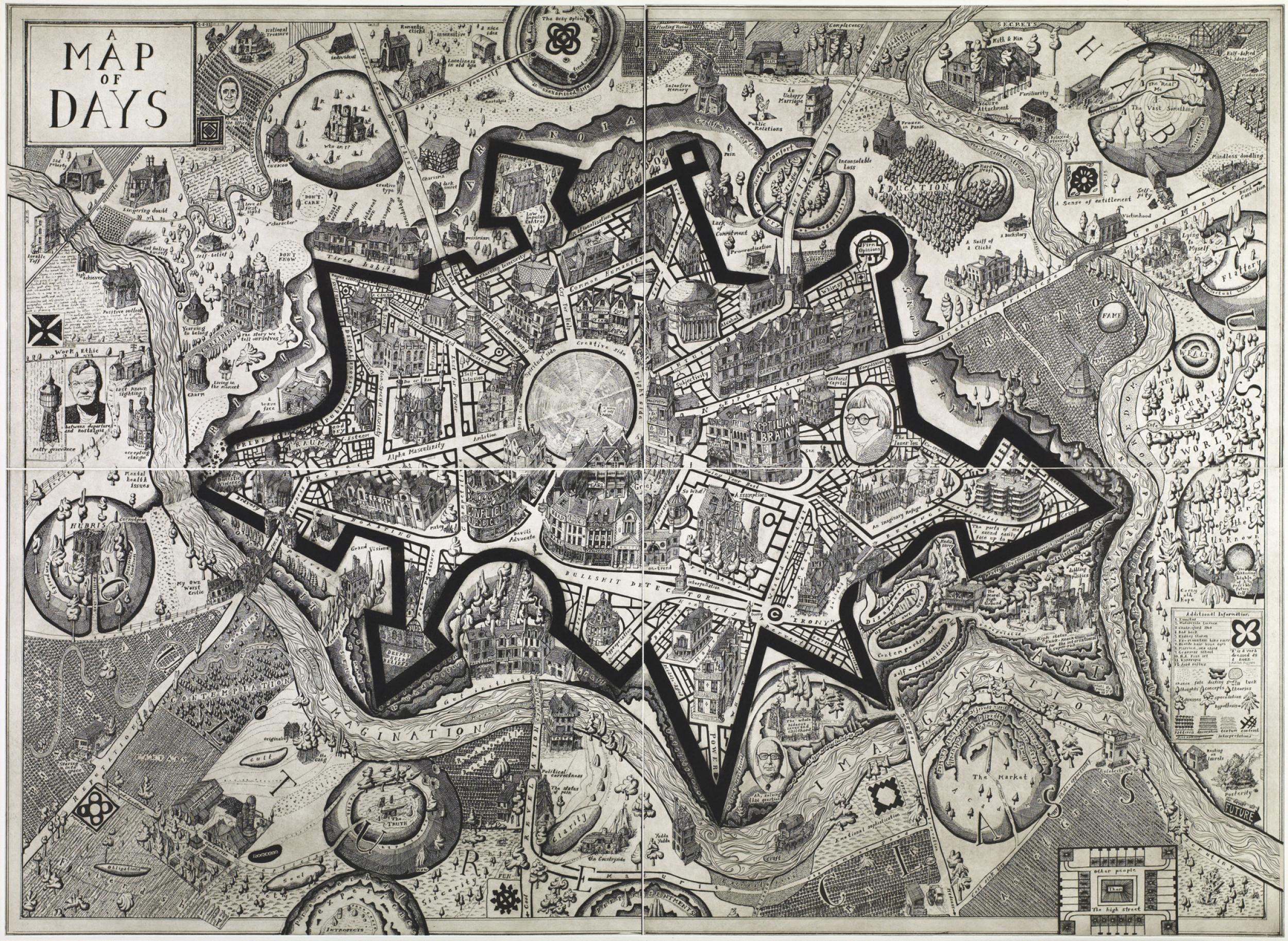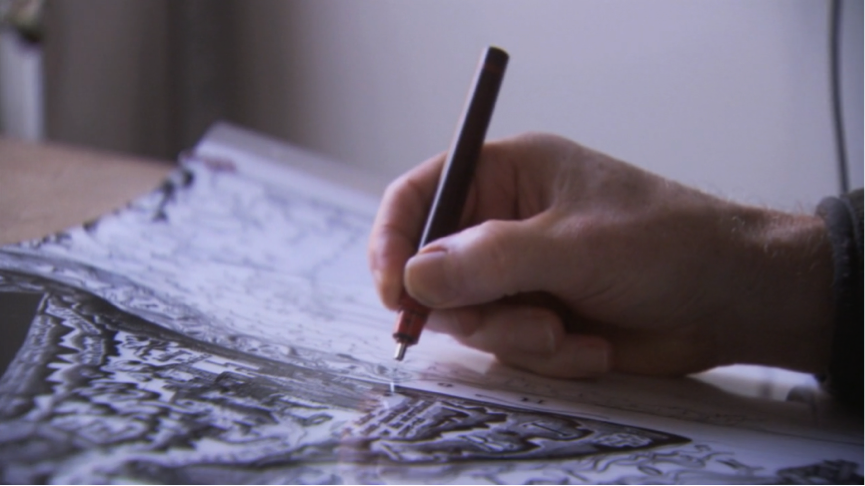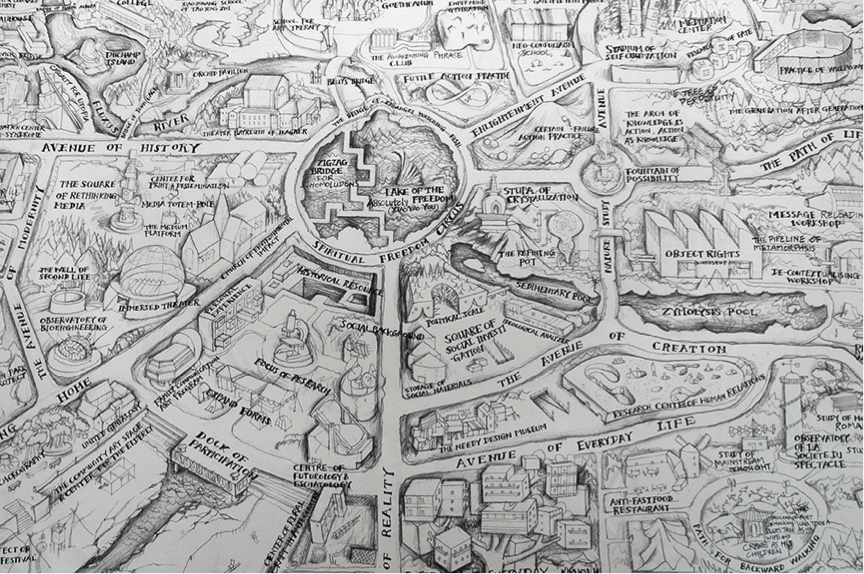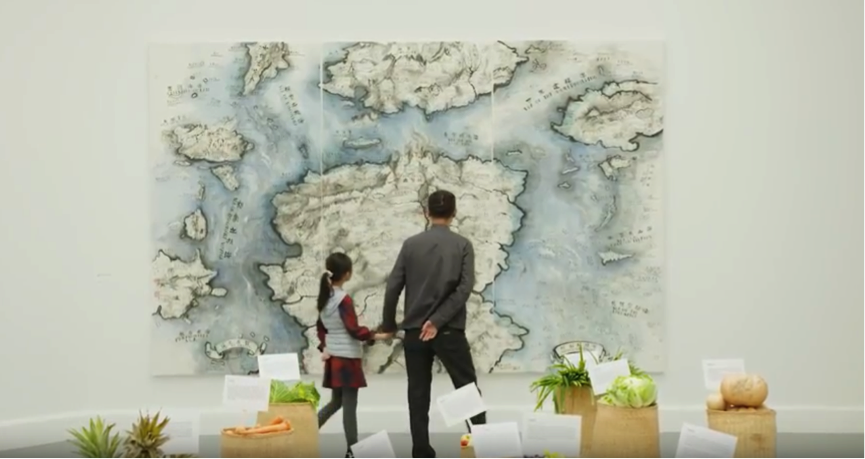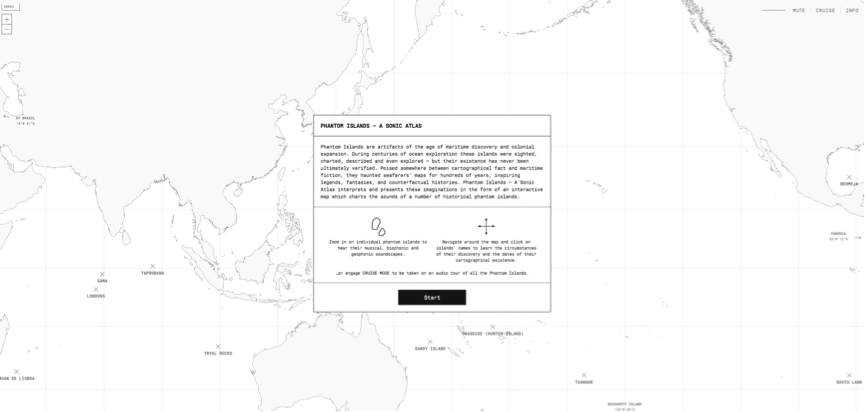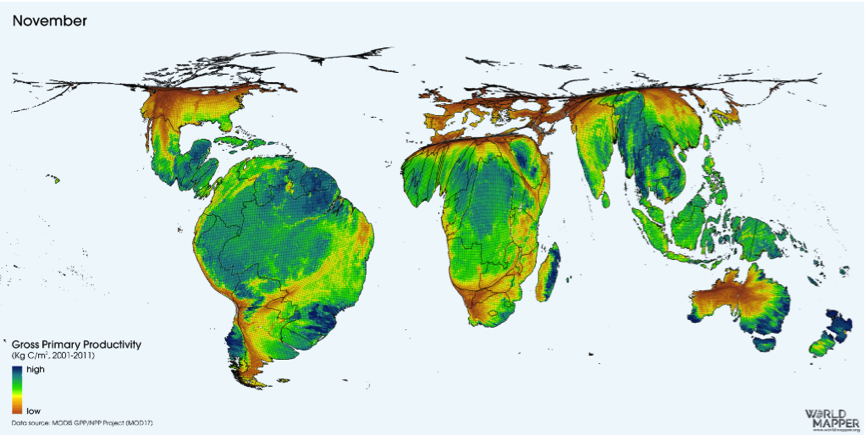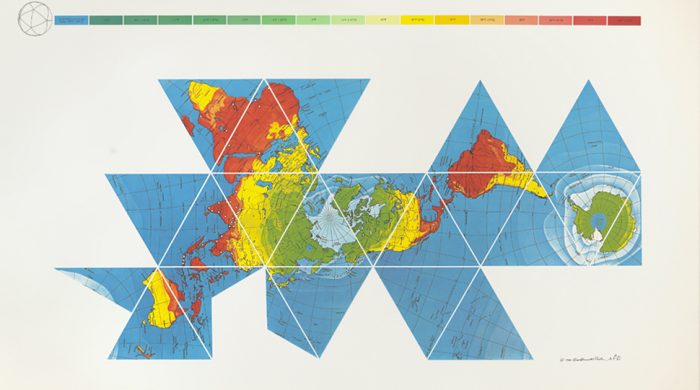I was one of the twenty lucky ones to be invited to an exclusive studio visit of Belgian and internationally renowned top-artist Berlinde De Bruyckere. She represented Belgium in the 55th Venice Biennale. The studio visit was organized by the Flemish Art Magazine HART.
Still from MO.CO interview video, Berlinde preparing with grace “to Zurbaran”, from 2015
“Born in Ghent, Belgium, in 1964, where she currently lives and works, Berlinde De Bruyckere was deeply influenced by the Flemish Renaissance painting. Drawing on the legacy of great European masters, religious iconography, as well as on ancient mythology and traditional culture, her work rests upon the dialectics experienced between images of current affairs and the breath of universal and timeless parables. By experimenting with malleable materials, like wax, fabric, or animal skin, Berlinde De Bruyckere built a unique body of work, simultaneously identifiable and moving, at times also unsettling, that translates into the flesh of sculptures the paradox of ‘sublime weakness’ posited by Lao-Tzu. Working both as a painter and a sculptor, her hybrid forms with human, animal, and plant features, bear an envelope, a diaphanous skin, or a bark under which quiver very dainty veins, a sap that ceaselessly flows and witnesses the hope contained in the miracle of each life.” (Quote from the MO.CO website)”
School corridor – Studio Berlinde De Bruycker – Picture by Petervan
Her studio is based in an old refurbished school building in the working-class neighborhood “Muide” in the port area in the north of the Belgian city of Ghent. This is also the area where she was raised: her father ran a butcher’s shop 100 meters from the school. Over the years, she and her husband transformed the classrooms into different art studios.
I managed my expectations for the visit upfront. Maybe at best, we would meet the artist during the welcome, and maybe the visit would only last one hour.
Welcome to Berlinde De Bruyckere studio – Picture by Petervan
Great was my surprise that Berlinde was there from start to finish, including during the lunch afterward. She was very approachable and hungry for questions about her work and her practice. During lunch, Berlinde was sitting in front of me, and I felt like we had an interesting conversation about her and my art practice.
The setting was quite exclusive: we could see work (in progress) that she was creating for her big upcoming exhibition in June 2022 in Montpellier, France.
That exhibition is live now and runs till 2 October 2022. Here is the home page of the exhibition in MO.CO (Montpellier Contemporain) website.
Detail TRE ARCANGELI, 2022 – Berlinde De Bruyckere – Picture by Petervan
During the group conversations around the TRE ARCANGELI, there was a sentence/question that touched me:
WELK BEELD KAN JE TROOSTEN?
WHAT IMAGE CAN COMFORT YOU?
TRE ARCANGELI, 2022 – Berlinde De Bruyckere – Picture by Petervan
Also, the conversation about working with a team was full of insights that for sure are also applicable to corporate teams. In this particular case: how do you empathically communicate failure to the team, and decide as a group that the work done does not fit the concept and that we have to start from scratch again?
I will come back later in another post about the meaning or “concept”, about conceptual art, conceptual business, and conceptual curation.
Having this opportunity to be in direct and close contact with a professional artist is super inspiring, and it influences my own work and practice in the following ways:
Focus: no distractions, silence, solitude
Professionalism: time for reflection, and discipline of doing the work, every day
Attitude: the combination of integrity, modesty, subduedness, stillness, respect
The value of a concept
To go as far as one wants
Making a group that is forced together
Showing its scars and wounds
The blanket is a metaphor for our failing society
Still from MO.CO interview video
When you leave the show and you feel that the themes are tough, it’s not easy to find words that express what you, as a spectator, felt about the show.
But you should leave with a feeling of hope
I will come back in September on this feeling of hope, or rather our longing and yearning for hope and excitement.
Warmly,


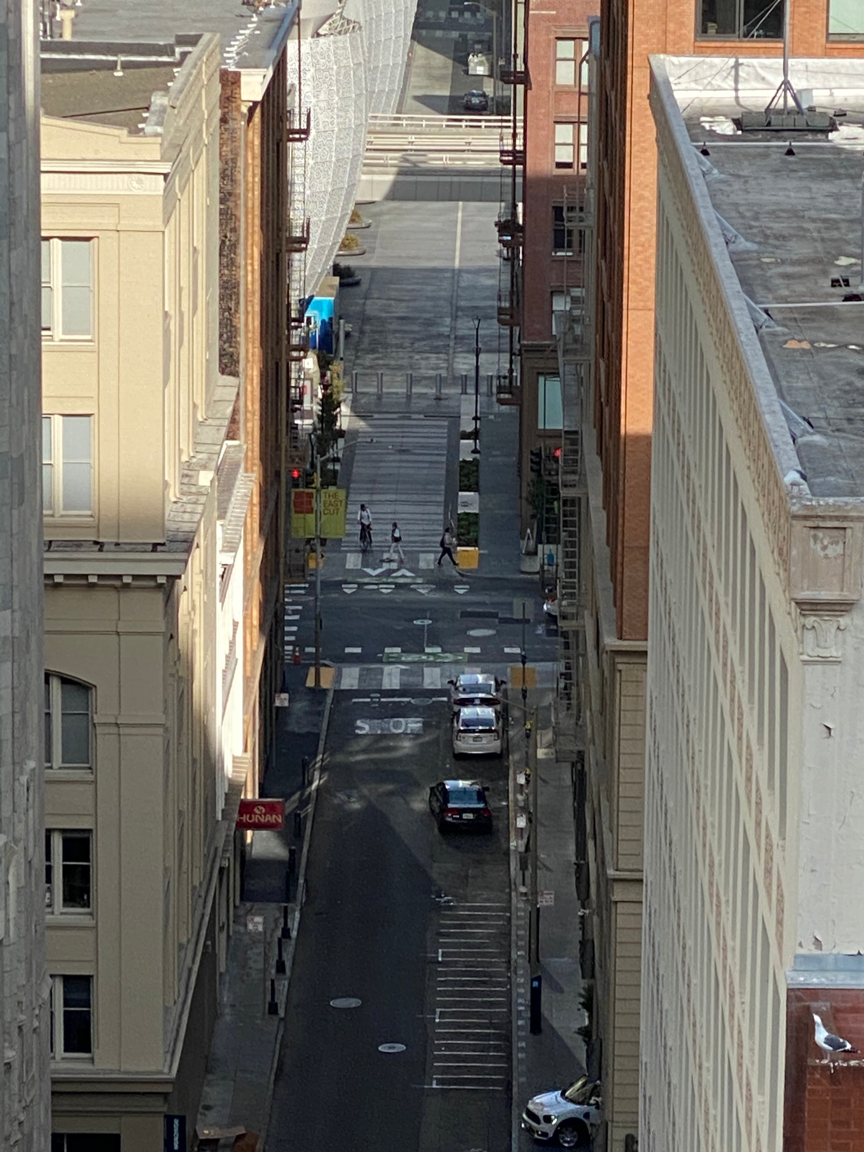
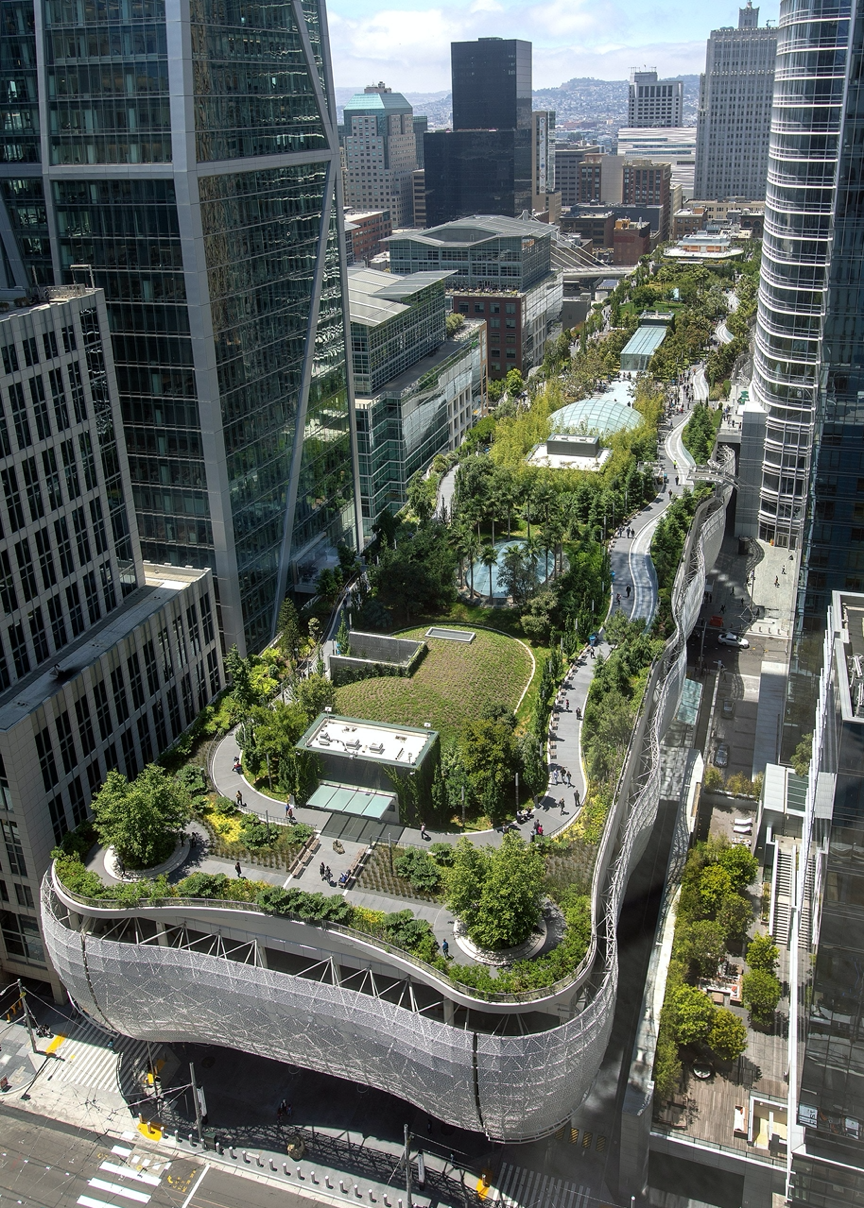
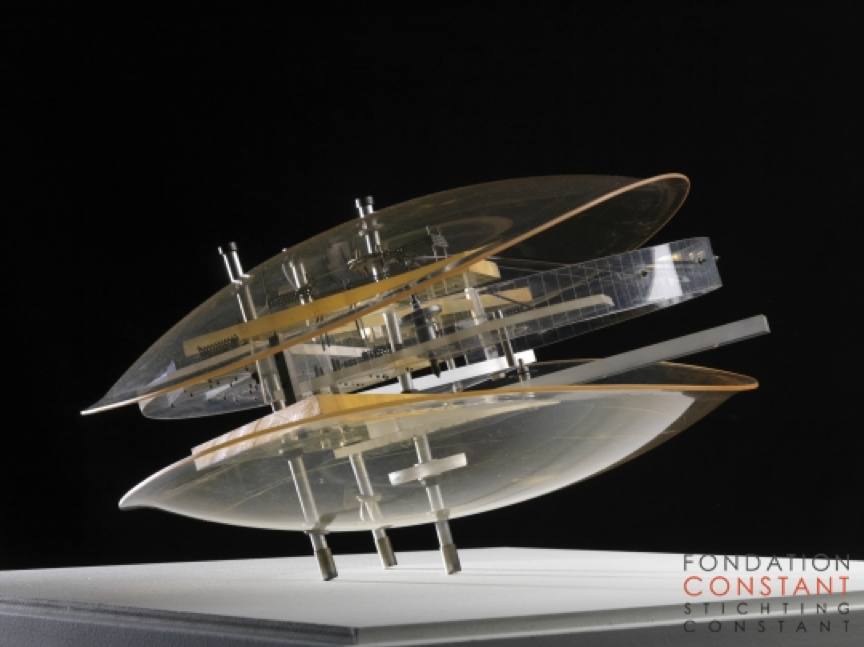
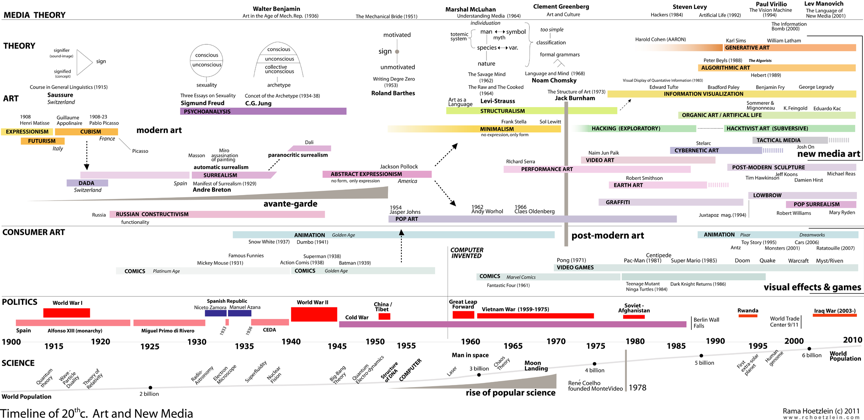
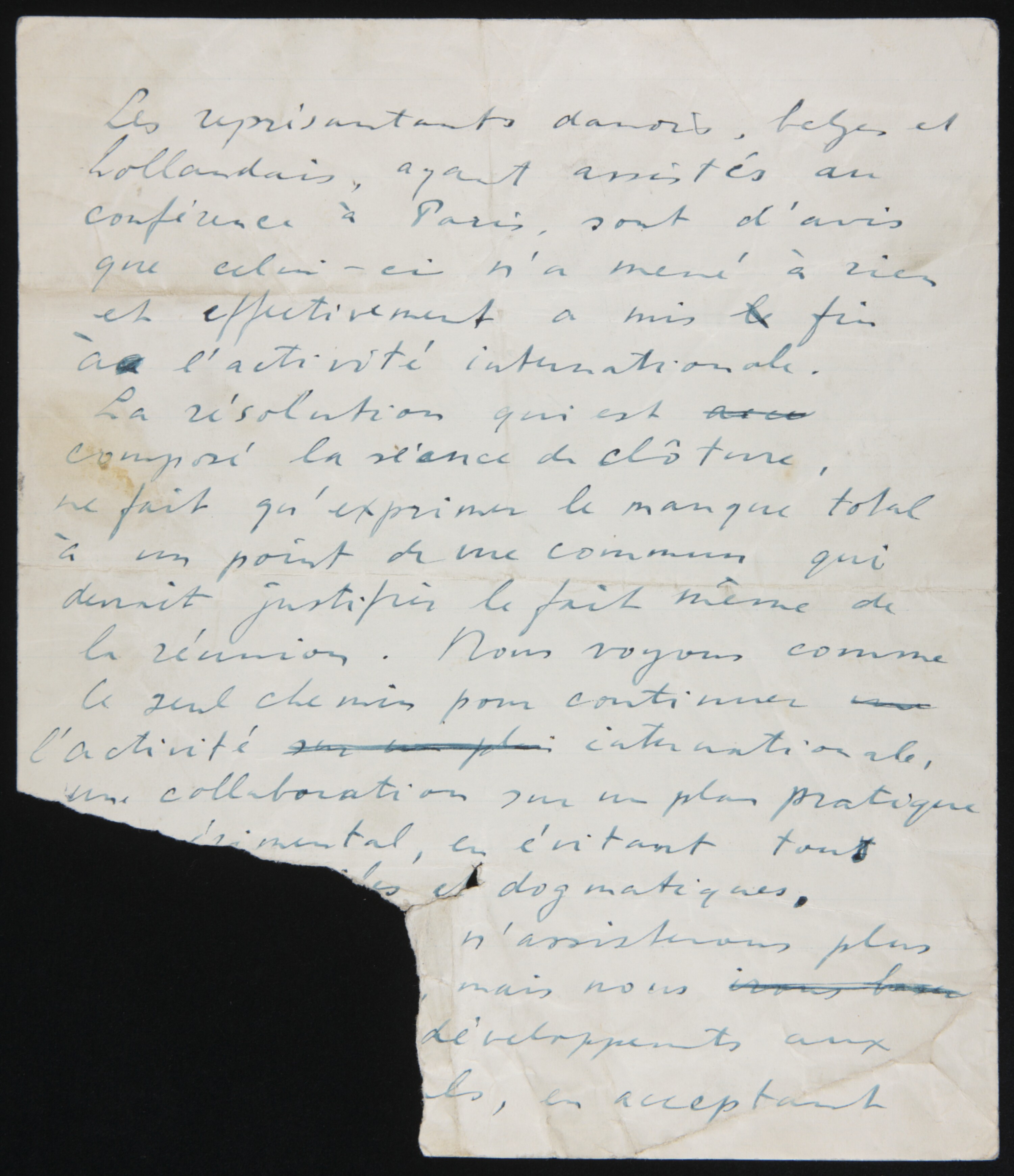
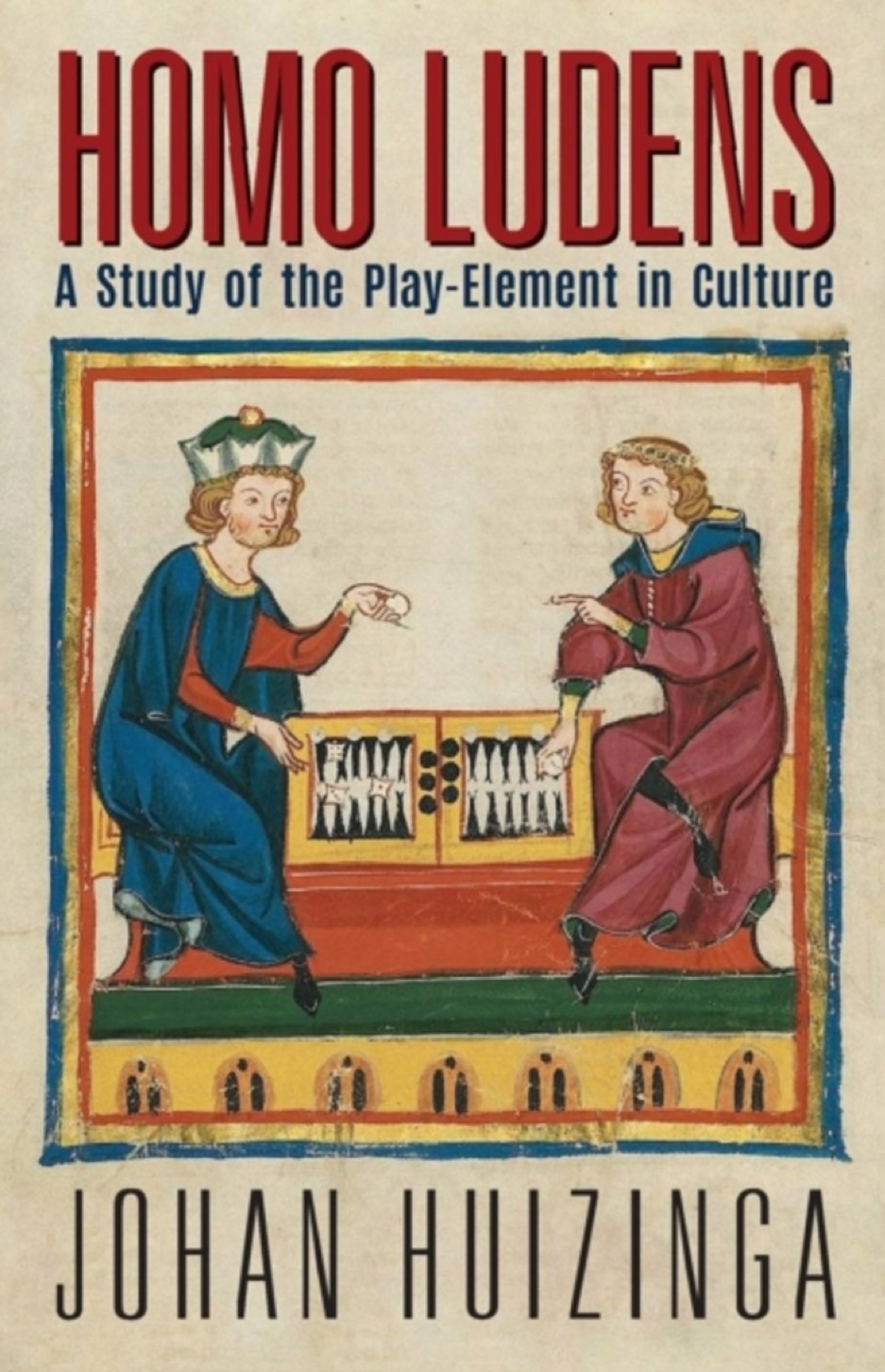
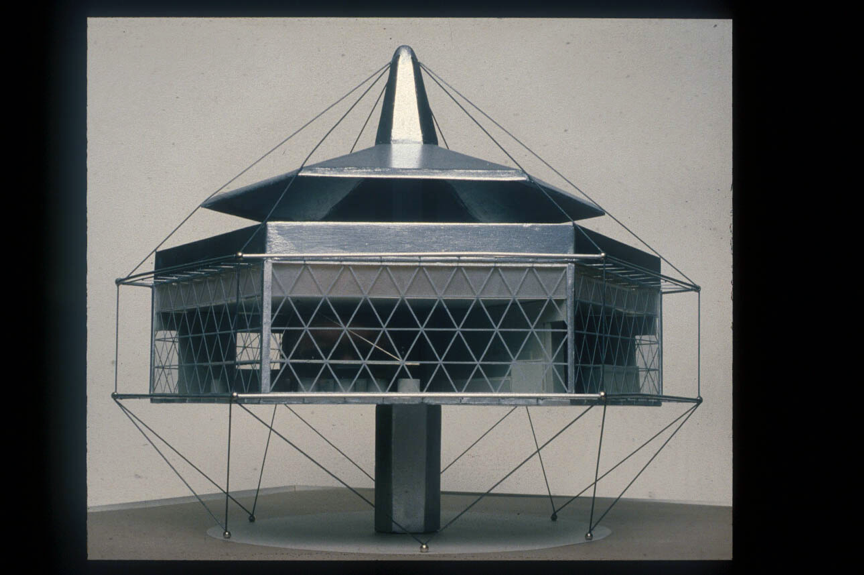
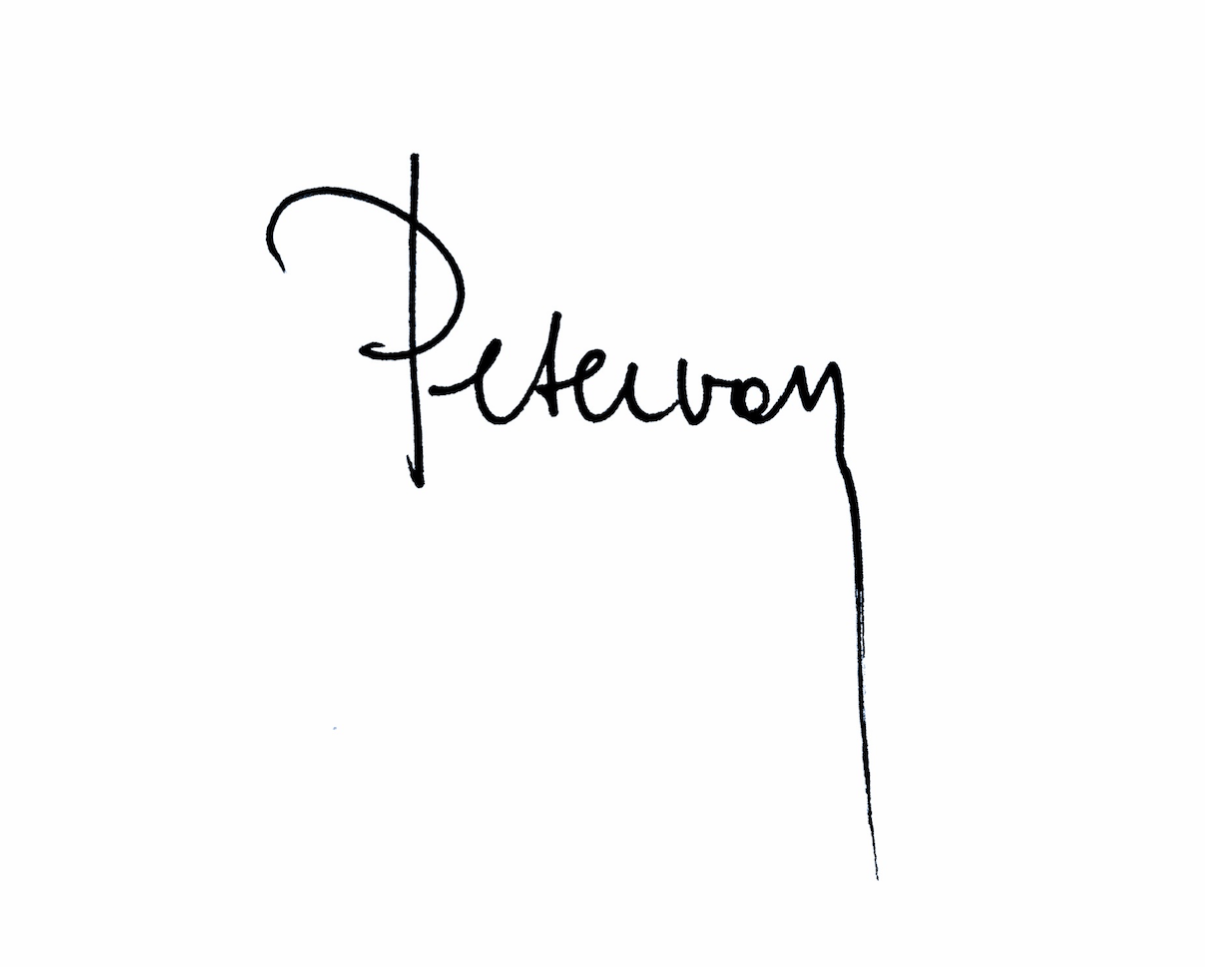
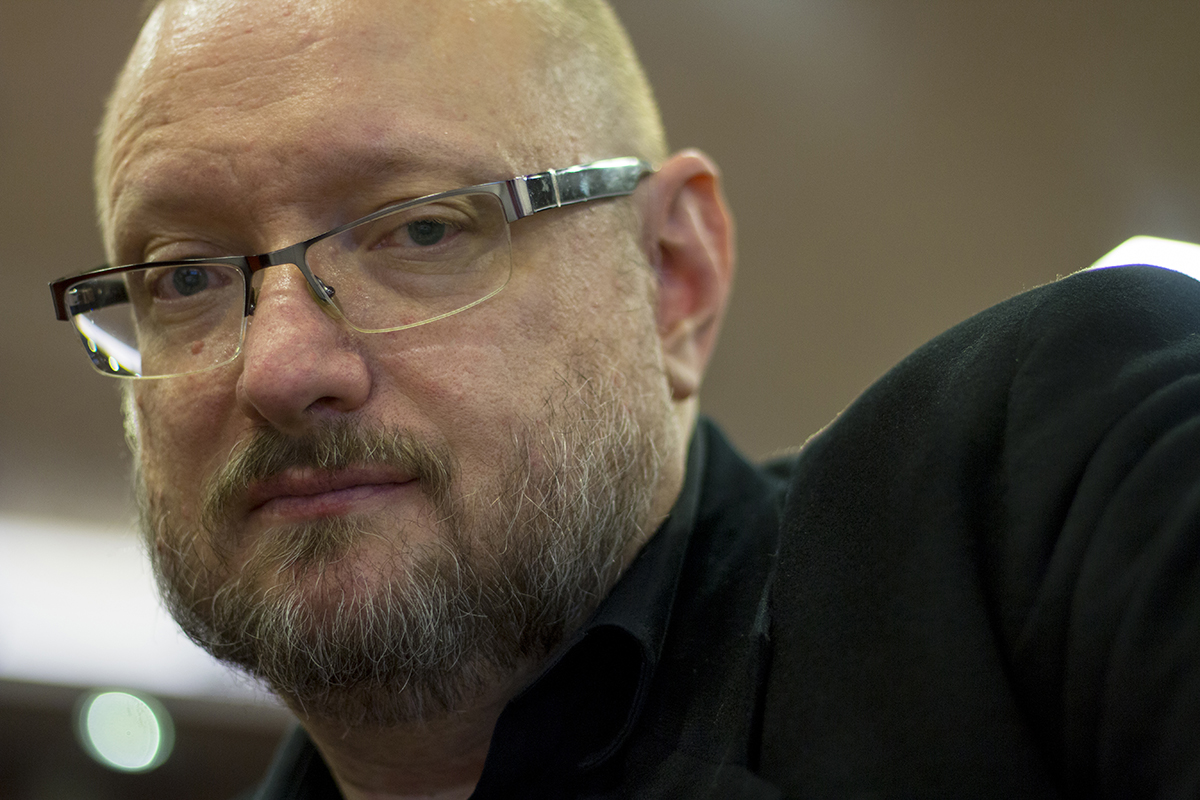
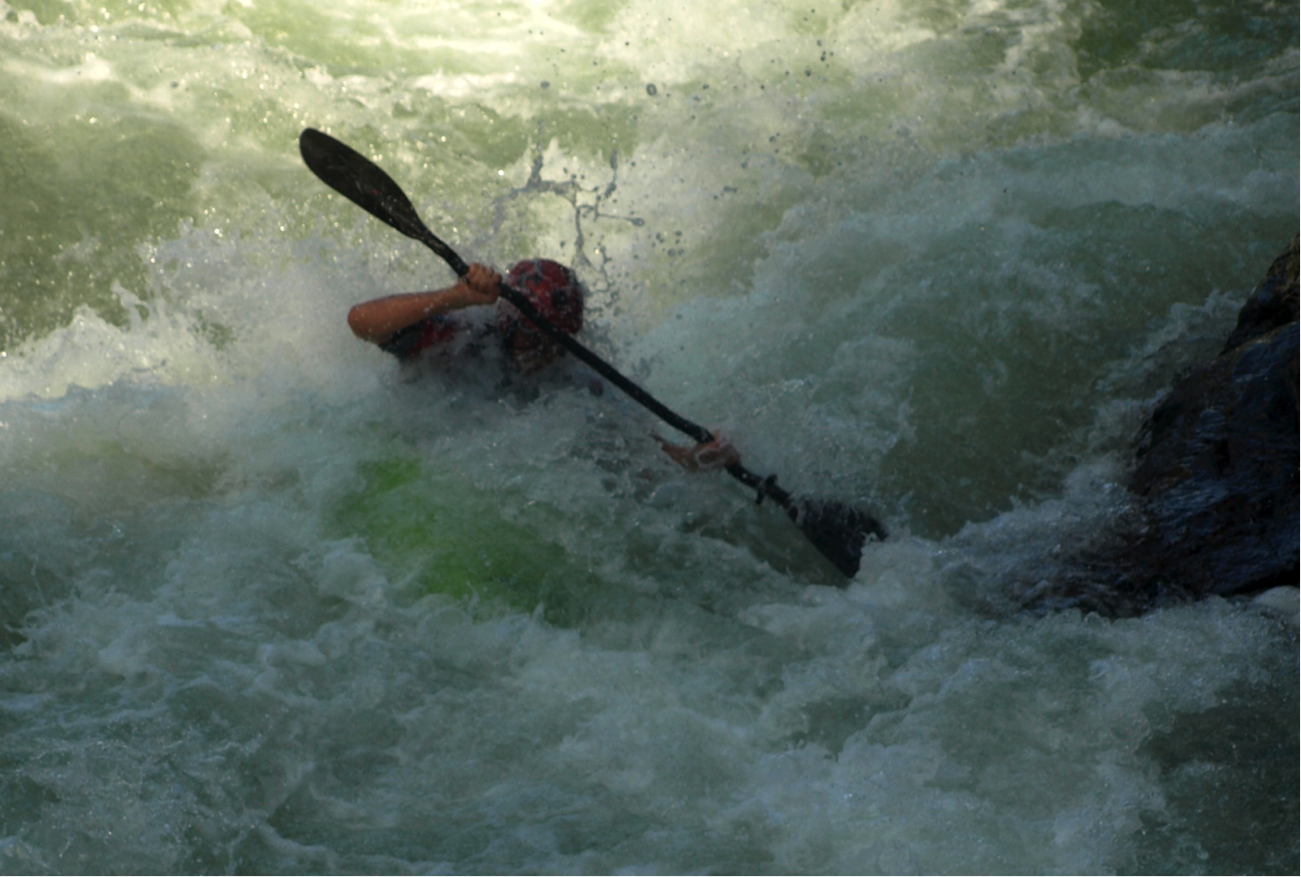
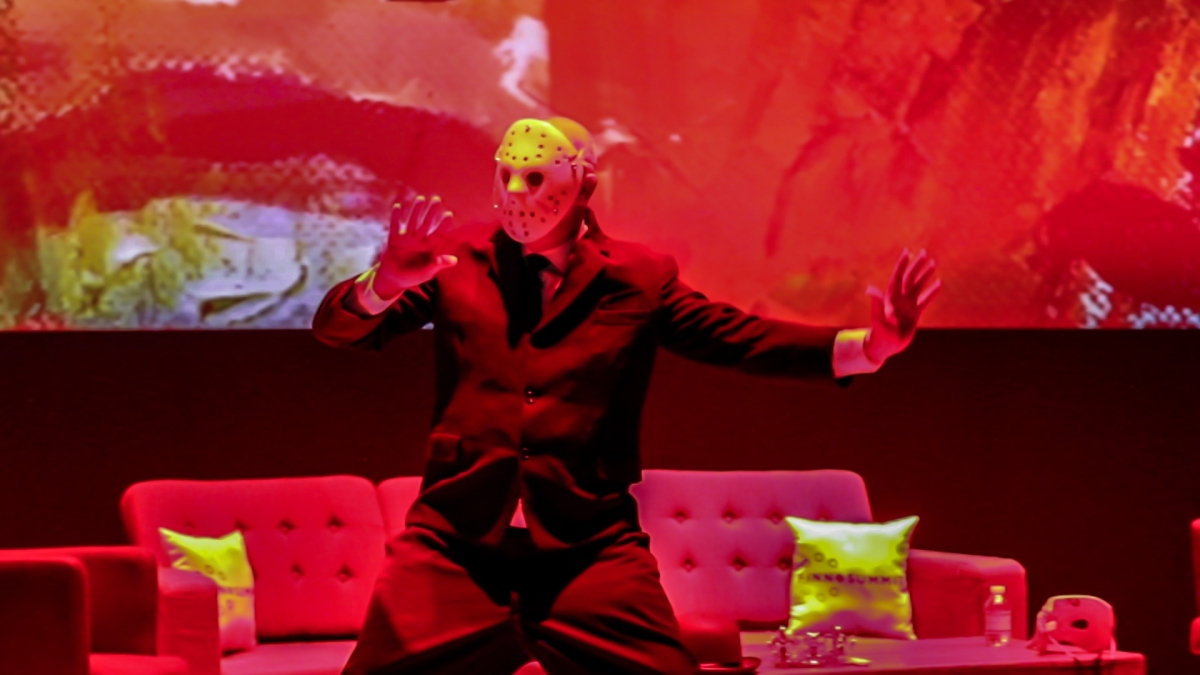
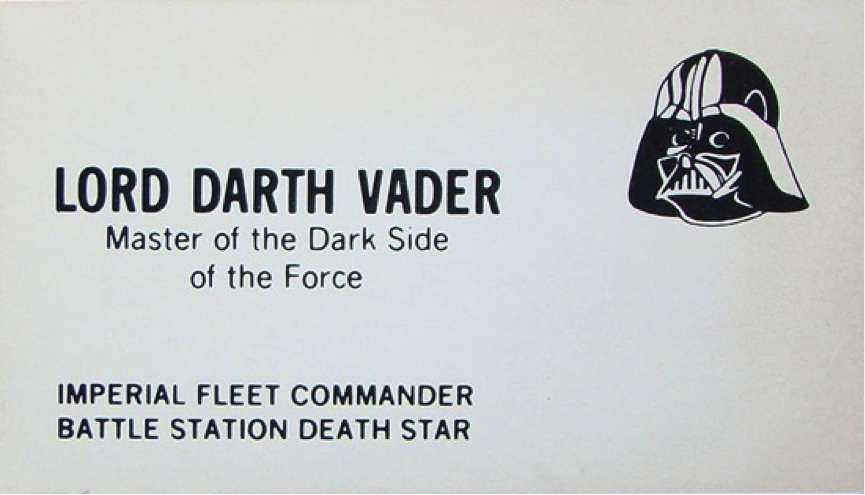
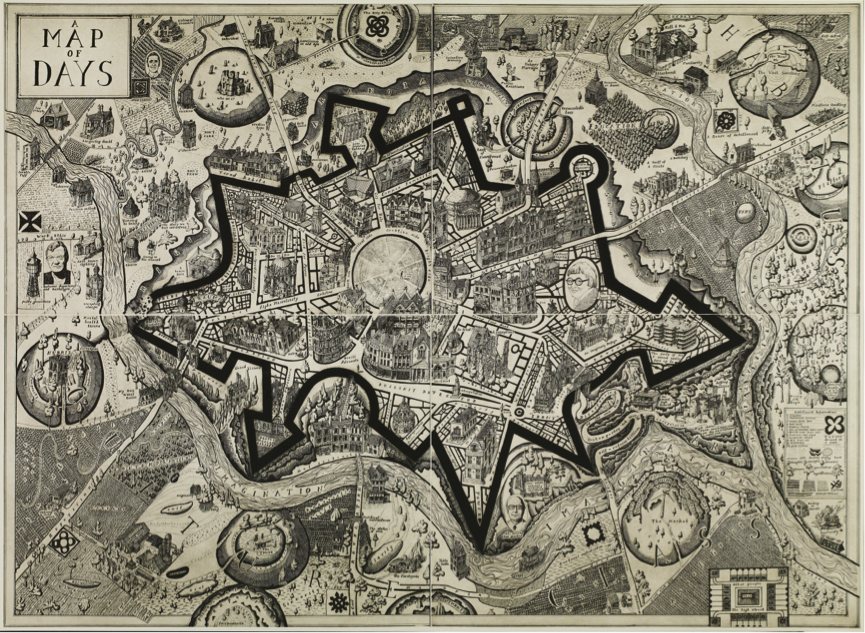 Fragment from A Map of Days by Grayson Perry
Fragment from A Map of Days by Grayson Perry